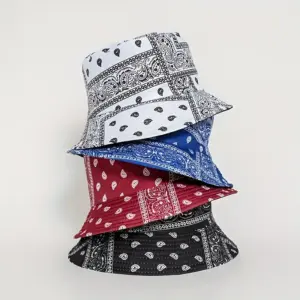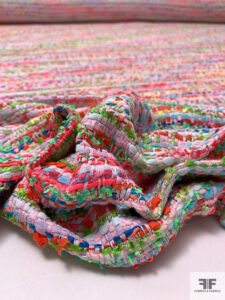Can You Mix Silk and Nylon Fabrics? A Comprehensive Guide
Introduction
Fabric compatibility is crucial in fashion and sewing, as it influences the final product’s look, feel, and longevity. Silk and nylon, both popular for their unique qualities, present an intriguing pairing. This article explores whether these fabrics can be successfully combined, delving into their properties, benefits, and challenges. By the end, you’ll have a comprehensive understanding of silk and nylon compatibility and how to work with them effectively.
Compatibility Analysis
Can silk and nylon be mixed? Yes, but with considerations. These fabrics can complement each other when their differences are balanced thoughtfully. Silk, a natural fiber, and nylon, a synthetic one, differ in texture, weight, and care requirements. The key is to match their stretch and weight, ensuring they drape well together. Consider their care needs—silk requires gentle handling, while nylon is more resilient. Combining them can enhance texture and durability, provided their unique characteristics are respected.
Fabric Properties Comparison Table
| Property | Silk | Nylon |
|---|---|---|
| Fiber Content | Natural | Synthetic |
| Weight and Thickness | Light, varies with weave | Light to medium |
| Breathability | Highly breathable | Moderately breathable |
| Moisture-Wicking | Low | High |
| Stretch and Elasticity | Low natural stretch | High elasticity |
| Wrinkle Resistance | Low | High |
| Care Instructions | Hand wash, low iron | Machine wash, low iron |
| Durability | Moderate | High |
| Wear Resistance | Moderate | High |
Benefits of Mixing These Fabrics
Combining silk and nylon offers several advantages:
- Enhanced Texture and Visual Interest: Silk’s sheen and nylon’s matte finish create a dynamic visual contrast.
- Improved Comfort and Performance: Nylon’s elasticity complements silk’s softness, providing flexibility and comfort.
- Better Drape and Movement: Silk’s fluidity and nylon’s structure offer a balanced drape, ideal for elegant garments.
- Cost-Effectiveness: Nylon’s affordability can offset silk’s cost, making luxurious designs more accessible.
- Seasonal Versatility: This blend works across seasons, offering warmth in winter and breathability in summer.
- Design Possibilities: The combination allows for innovative designs in both fashion and home decor.
Potential Challenges
Despite their benefits, mixing silk and nylon can present challenges:
- Different Shrinkage Rates: Pre-wash fabrics to minimize shrinkage discrepancies.
- Conflicting Care Requirements: Opt for the gentlest care method suitable for both.
- Texture Clash or Pilling: Use a fabric softener and avoid abrasive washing.
- Seam Puckering: Use stabilizers and proper tension settings.
- Color Bleeding or Fading: Test for colorfastness before washing.
Address these issues with careful planning and testing to ensure a successful fabric pairing.
Sewing & Styling Tips
When sewing silk and nylon together, precision is key:
- Best Sewing Techniques: Use French seams for a polished finish.
- Needle and Thread Recommendations: A fine needle (size 70/10) and polyester thread work well.
- Interfacing and Stabilizer Needs: Lightweight interfacing helps maintain structure without adding bulk.
- Seam Finishing Methods: Consider pinking shears or serging to prevent fraying.
- Pattern Selection Advice: Choose patterns with simple lines to highlight the fabric’s qualities.
- Styling Ideas: Use this blend in flowing dresses or drapery for a luxurious touch.
Care & Maintenance Guide
Proper care extends the life of silk and nylon blends:
- Washing Instructions: Hand wash in cold water or use a delicate cycle.
- Drying Recommendations: Air dry flat to maintain shape.
- Ironing and Steaming Tips: Use a low heat setting and a pressing cloth.
- Stain Removal: Treat stains promptly with a gentle detergent.
- Long-Term Care: Store away from direct sunlight to prevent fading.
FAQ Section
-
Can you wash silk and nylon together?
- Yes, but use the gentlest method suitable for silk.
-
Will silk shrink more than nylon?
- Yes, silk is more prone to shrinkage, so pre-wash is advisable.
-
What needle size should I use for sewing silk and nylon together?
- A fine needle, such as size 70/10, is recommended.
-
Can you mix silk and nylon in one garment?
- Absolutely, with attention to their respective properties.
-
How do you prevent puckering when combining these fabrics?
- Use stabilizers and adjust machine tension settings.
-
Is it okay to mix silk and nylon for upholstery?
- Yes, but consider the durability and care requirements.
-
What’s the best way to finish seams with silk and nylon?
- French seams or serging are ideal for a clean finish.
By understanding the properties and care needs of silk and nylon, you can create beautiful, functional garments and decor that showcase the best of both fabrics.



Leave a Reply